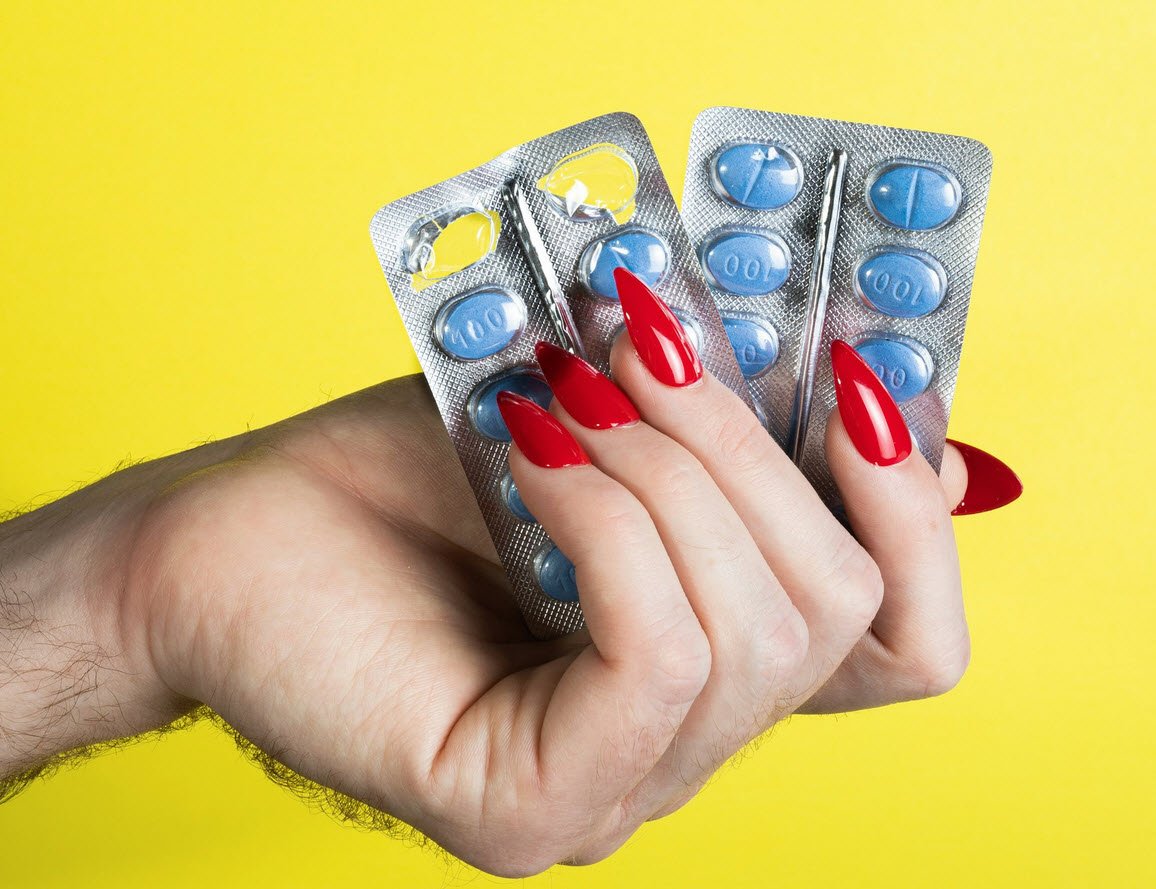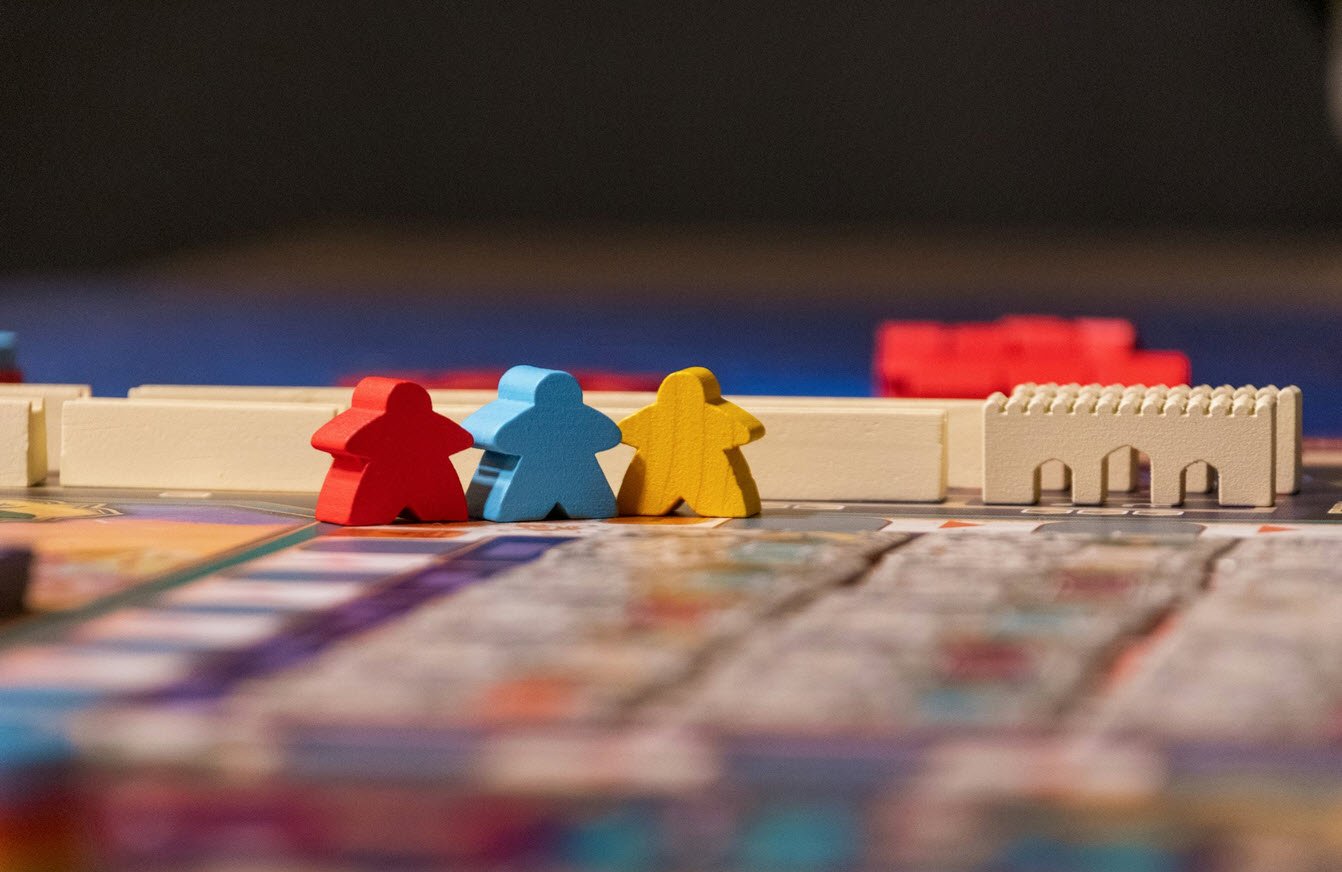
Here, we are providing you with some multiple-choice questions with answers related to Health, Food and Diseases as also discussed in Part 1.
126. Floods hazard health through the spread of
- Cholera
- Malaria
- Influenza
- Diarrhoea
127. Epilepsy is a disease of the
- Respiratory system
- Nervous system
- Heart
- Skin
128. Heart disease is mainly caused by the high intake of
- Cholesterol
- Sugar
- Proteins
- Starch
129. Which of the following is NOT transmitted by mosquitoes?
- Malaria
- Dengue
- Infective hepatitis
- Filariasis
130. Which of the following is a genetically transmitted disease?
- Astigmatism
- Colour blindness
- Long sight
- short sight
131. If a person cannot clearly see objects nearer than 75cm from his eyes, which condition of the eye is he suffering from?
- Astigmatism
- Colour blindness
- Myopia
- Hypermetropia
132. A boy suffers from colour blindness. He has acquired this character from his
- Father
- Mother
- Both father and mother
- None of these
133. A woman who weighs 45 kg and whose work involves a lot of physical exertion needs about
- 3500 calories per day
- 2800 calories per day
- 3700 calories per day
- 3000 calories per day
134. Balanced diet may be defined as
- The diet which is rich in protein and energy
- The diet which contains all the food substances in correct proportion
- The diet which has meat, eggs and fats
- The diet which has low fibre content
135. Amniocentesis is a method for:
- Determination of foetal health conditions
- Determination of the amino acid sequence
- Inducing abortion
- Artificial insemination
136. The volume of urine produced by an adult human being in 24 hours is
- 1.00 litre
- 1.5 litres
- 3.00 litres
- 5.00 litres
137. What does human urine contain mainly besides water?
- Urea
- Sugar
- Salt
- All the above
138. Increase of urea in the blood is due to malfunctioning of
- Liver
- Heart
- Small intestine
- Kidney
139. Chocolates can be bad for health because of a high content of
- Cobalt
- Nickel
- Zinc
- Lead
140. Energy is stored in the liver and muscles in the form of
- Glycogen
- Starch
- Fats
- Cholesterol
141. Which energy is most suitable for living system?
- Solar
- Potential
- Kinetic
- Chemical
142. Anabolic steroids are used for which of the following?
- To boost physical energy of sportspersons
- For the treatment of drug addicts
- To improve memory
- To improve functioning of heart of cardiac patients
143. The human body consists mainly of
- Proteins
- Water
- Fats
- Plasma
144. Bile which helps in the digestion of food, is secreted by
- Pituitary
- Stomach
- Pancreas
- Liver
145. Bile is stored in the
- Lungs
- Kidneys
- Intestines
- Gall Bladder
146. Thought, feelings and perception get distorted when one is under the influence of
- Tranquilisers
- Hashish
- Morphine
- Amphetamines
147. Anthrax is one of the most potent biological weapons of the world. It is spread by a single bacterian called
- Bacillus thuricide
- Bacillus anthratun
- Thiobacillus
- Bacillus anthracis
148. The centre which regulates the amount of food we eat situated in
- Stomach
- Cerebrum
- Spinal chord
- Hypothalamus
149. How many pairs of ribs are there in the human body?
- Twelve
- Fourteen
- Thirteen
- Eleven
150. How many lungs does a human body normally has
- 2
- 3
- 4
- 1
151. How many sense organs do human beings have?
- 5
- 4
- 3
- 2
152. Which gland of human body is called ‘Adam’s Apple’?
- Pituitary
- Adrenal
- Thyroid
- Endocrine
153. The application of the principles of genetics to improvement of human race is known as
- Eugenics
- Genetic Engineering
- Biotechnology
- Transgenesis
154. ‘Biopsy’ is a
- Physical study of life in artificial environment
- Medical diagnositic technique using cells and tissues
- Examination of body after death to determine the cause of death
- An assessment of life forms in an environment
155. The outer layer of the skin is called
- Dermis
- Epidermis
- Enidermis
- Exidermis
156. The operation to sterlize males is called
- Spermectomy
- Gametectomy
- Vasectomy
- Hysterectomy
157. Which one of the following is responsible for transfer the genetic information from one generation to the new?
- Codon
- DNA
- RNA
- Messenger RNA
158. DNA finger-printing is the latest technology used in
- Printing Technology
- Astrology
- Forensic Science
- Microbial Genetics
159. In brain, the site of intelligence, memory and emotion is present in
- Cerebrum
- Cerebellum
- Medulla
- Hypothalamus
160. Chromosomal abnormalities of an unborn child can be found by a technique called
- CAT scanning
- Ultrasound
- Aminocentesis
- Genetic engineering
161. Activities of all living cells are controlled by:
- Chloroplast
- Nucleus
- Tonoplast
- Chromosomes
162. The sex of a child is determined by the
- Chromosomes of the father
- Chromosomes of the mother
- Rh factor of the parents
- Blood group of the father
163. Which of the following organelles is known as powerhouse of the cell?
- Lysosomes
- Ribosomes
- Nucleus
- Mitochondria
164. What useful function does the appendix serve in the human body?
- Blood clotting
- Blood circulation
- Kidney health
- None
165. Which is a balanced diet for children under six months of age?
- Meat
- Fish
- Pulses
- Milk
166. The most significant ingredient that a body gets through breast feeding is
- Proteins
- Antibodies
- Vitamins
- Fats
167. The souring of milk is caused by the action of
- Protozoa
- Bacteria
- Viruses
- None of these
168. Which of the following is a starchy food?
- Egg
- Milk
- Potato
- None of these
169. Which is the basic constituent of life?
- Cell
- Nucleus
- Chlorophyll
- Protoplasm
170. The fat content in milk is reduced during
- Rainy season
- Winter
- Summer
- Pregnancy
171. During which season our body needs more fats?
- Summer
- Rainy season
- Winter
- Spring
172. Which of the following is an excretory organ of human body
- Liver
- Spleen
- Heart
- Kidney
173. Which of the following helps in human digestion?
- Nitric acid
- Sulphuric acid
- Citric acid
- Peptic acid
174. Digestion of food starts in the
- Mouth
- Liver
- Stomach
- Intestines
175. Which of the following is related to the digestive system?
- Prostate
- Platelets
- Pituitary
- Pancreas
176. Saliva converts:
- Proteins into amino acids
- Glycogen into maltose
- Starch into maltose
- Fats into vitamins
177. Pasteurisation of milk means:
- Heating of milk to about 100 degree
- Heating of milk to about 62 degree Celsius
- Cooling of milk to about 4 degree Celsius
- Cooling of milk to about 0 degree Celsius
178. Which of the following is the common household sugar?
- Glucose
- Galactose
- Maltose
- Surcose
179. EEG is related to
- Brain
- Heart
- Eyes
- Kidneys
180. When does the heart take rest?
- While you sleep
- Between beats
- During stress
- Never
181. The heart of an adult human being beats about
- 50 times per minute
- 72 times per minute
- 90 times per minute
- 110 times per minute
182. The heart of a normal adult human being weighs about
- 200 grams
- 300 grams
- 400 grams
- 500 grams
183. A person suffering from which of the following cannot see with clarity the horizontal and vertical lines simultaneously in a grid?
- Myopia
- Hypermetropia
- Astigmatism
- Squint
184. The doctor checks the pulse for
- Temperature
- Blood pressure
- Heartbeat
- Respiration rate
185. The process of respiration is concerned with:
- Intake of oxygen
- Liberation of oxygen
- Liberation of carbon dioxide
- Liberation of energy
186. Respiratory mechanism is controlled by:
- Central Nervous System
- Sympathetic Nervous System
- Parasympathetic Nervous System
- Autonomic Nervous System
187. We have four types of teeth. What is the CORRECT order in which they appear in man?
- Premolar, Molar, Canine, Incisor
- Insicor, Premolar, Canine, Molar
- Premolar, Canine, Molar, Incisor
- Incisor, Canine, Premolar, Molar
188. Wisdom teeth generally appear in the human beings between
- 17 and 20 years of age
- 30 and 40 years of age
- 10 and 17 years of age
- 4 and 8 years of age
189. Generally a five-year child has how many teeth?
- 16
- 18
- 20
- 24
190. How many permanent teeth does an adult human being have?
- 8
- 16
- 24
- 32
191. The strongest muscles in the human body is
- Thigh
- Wrist
- Finger
- Jaws
192. The total number of muscles in the human body is
- 525
- 639
- 373
- 547
193. The total number of bones in the human skull are
- 8
- 12
- 30
- 32
194. Which gland in the human body is called the master gland?
- Pancreas
- Thyroid
- Pituitary
- Spleen
195. Pituitary gland is present
- Below the brain
- Above the brain
- Inside the brain
- Nowwhere in the brain
196. Where in the body are the adrenal glands located?
- Above the kidneys
- In the brain
- Below the ears
- Under the lungs
197. Which one of the following is found in kidney stones?
- Sodium oxalate
- Calcium oxalate
- Sodium chloridz
- Calcium acetate
198. A person with stones in the kidney is advised to avoid
- Lemon
- Vinegar
- Tomatoes
- Lentils
199. How many kidneys does a normal human body have?
- 1
- 2
- 3
- 4
200. At what temperature is the reading the same in both Centigrade and Fahrenheit scales?
- 98.4 degree
- 100 degree
- 100 degree
- -40 degree
201. The boiling point of water is
- 90 degree Fahrenheit
- 100 degree Celsius
- 110 degree Celsius
- 120 degree Fahrenheit
202. ‘Euthanasia’ means
- State of unconsciousness under anaesthesia
- A post-operative infection
- A condition beyond reprieve
- Mercy killing
203. The image formed on the retina of the eye is
- Real and inverted
- Virtual and upright
- Real and enlarged
- Real and upright
204. The pupil of the eye adjusts automatically for
- Short distance vision
- Colour
- Object of size
- Amount of light
205. Triple Antigen treatment for children is toward off
- Whooping cough
- Tetanus
- Diphtheria
- All the above
206. The medicine used to fight plague is
- Tetracycline
- Quinine
- Streptomycin
- Penicillin
207. Analgesics are used to relieve
- Fever
- Pain
- Nervousness
- Anxiety
208. Allergy is treated by
- Analgesics
- Allergen
- Antipyretic
- Antihistamine
209. Insulin controls
- Iodine level in the thyroid
- Amount of iron in the blood
- Level of sugar in the blood
- Level of urea in the blood
210. Which of these is NOT a kind of fungus?
- Yeast
- Mushroom
- Insulin
- Ergot
211. BCG is used to prevent
- Hydrophobia
- Cancer
- Neuralgia
- Tuberculosis
212. DPT vaccination is for immunization against
- Diphtheria, Pneumonia and Tetanus
- Diphtheria, Pertussis and Tetanus
- Diarrhoea, Pneumonia and Tetanus
- Diphtheria, Pneumonia and Typhoid
213. ATS injection is given to those who have not had any immunisation against
- Tetanus
- Tuberculosis
- Tonsillitis
- Typhoid
214. Which of the following diseases is detected by the ELISA test?
- AIDS
- T.B.
- Cholera
- Typhoid
215. A special test for detection of tuberculosis is
- Widal’s
- Kahn’s
- Montoux’
- Rebert’s
216. Radium is used to cure which disease?
- Cancer
- Bright’s disease
- Haemophilia
- Typhoid
217. Which one of the following controls the amount of light entering the eye?
- Cornea
- Iris
- Lens
- Retina
218. In human body, quantity of water is about
- 10%
- 20%
- 65%
- 80%
219. Acupuncture is a technique
- To correct a tube puncture
- To subside the pain
- To cure certain diseases eg. arthritis, Rheumatism etc.
- For operation and removal of a body part
220. Acupuncture as a form of anaesthesia is common in
- Russia
- India
- Japan
- China
221. Which part of the body is affected by arthritis?
- Heart
- Spinal Cord
- Brain
- Joints
222. Which was the first country whose scientists succeeded in fertilizing the human embryo in the test-tube?
- USA
- Russia
- UK
- Japan
223. Genetics is the study of
- Cell Division
- Reproduction
- Mutations
- Mechanism of inheritance
224. Neurology is a science of this system:
- Skeletal system
- Alimentary system
- Circulatory system
- Nervous system
225. Physiology is the study of the
- Structure of the body
- Cells in the body
- Functions of the human body
- All of the above
226. The normal temperature of the human body is
- 36.9 degree celsius
- 98.6 degree celsius
- 50.8 degree celsius
- 47.6 degree celsius
227. ‘Ayurveda’ literally means the
- Science of healing
- Science of life
- Treatise on health
- Book of cures
228. The branch of science dealing with the study of human skin is called
- Pathology
- Physiology
- Anatomy
- Dermatology
229. Which of the following aids in controlling body temperature?
- Brain
- Skin
- Nails
- Stomach
230. A cardiogram is used to trace the
- Growth of plants
- Functioning of lungs
- Functioning of the heart
- Defect in the small intestine
231. Foetus development in women’s womb can be ascertained by
- CAT scanning
- PTT scanning
- Sonography
- None of above
232. The function of a pacemaker is
- Regulation of urine formation
- Regulation of digestion
- Initiation of heartbeat
- Initiation of respiration
233. A clone is a colony of
- Cells having different shapes
- Cells having similar shapes
- Cells having similar genetic constitutions
- Cells having different genetic constitutions
234. As a person becomes older, his blood pressure generally
- Decreases sharply
- Increases
- Varies widely
- Remains the same
235. A normal human being has blood pressure
- 100/200
- 100/90
- 120/80
- 90/70
236. The metal compound commonly found in Sindhoor or kumkum is based on
- Tin
- Lead
- Copper
- Zinc
237. If a cobra bites a human being, the system affected by the venom of the cobra would be the
- Nervous system
- Respiratory system
- Excretory system
- Digestive system
238. Mosquitoes identify human bodies by
- Sight
- Odour
- Instinct
- Heat radiated
239. The effect of hormones on the body is
- Stimulation of organs
- Catalytic functions
- Proper growth
- Coordination of functions of different organs
240. In human body what connects muscles to the bones?
- Ligaments
- Tendon
- Cartilage
- Muscles
241. Where in the body is the thyroid gland?
- Chest
- Stomach
- Throat
- Neck
242. Which pigment imparts colour to the human skin?
- Keratin
- Melanin
- Haemoglobin
- Bile
243. Filtration of wastes from the blood in human body is done by the
- Heart
- Lungs
- Kidneys
- Intestines
244. The organ that filters bacteria and foreign particles from the blood in human beings is
- Heart
- Thymus
- Spleen
- Liver
245. The Polio virus enters the body through
- Mosquito bites
- Tick bites
- Contaminated food and water
- Saliva and secretion from the nose
246. Which of the following enters the human body through skin?
- Tapeworm
- Hookworm
- Ringworm
- Threadworm
247. The total number of vertebrae in man is
- 30
- 31
- 32
- 33
248. To make a movement we need muscles. How many?
- 2
- 1
- 4
- 5
249. Muscles make up a part of a person’s body weight. How much?
- 20 per cent
- 30 per cent
- 40 per cent
- 50 per cent
250. Excessive intake of polished rice causes deficiency of
- Vitamin A
- Vitamin B
- Vitamin D
- Vitamin K
Stay tuned with HealthHyme.com for more MCQs.
Download the PDF version – “Health, Food and Diseases Related MCQ“








